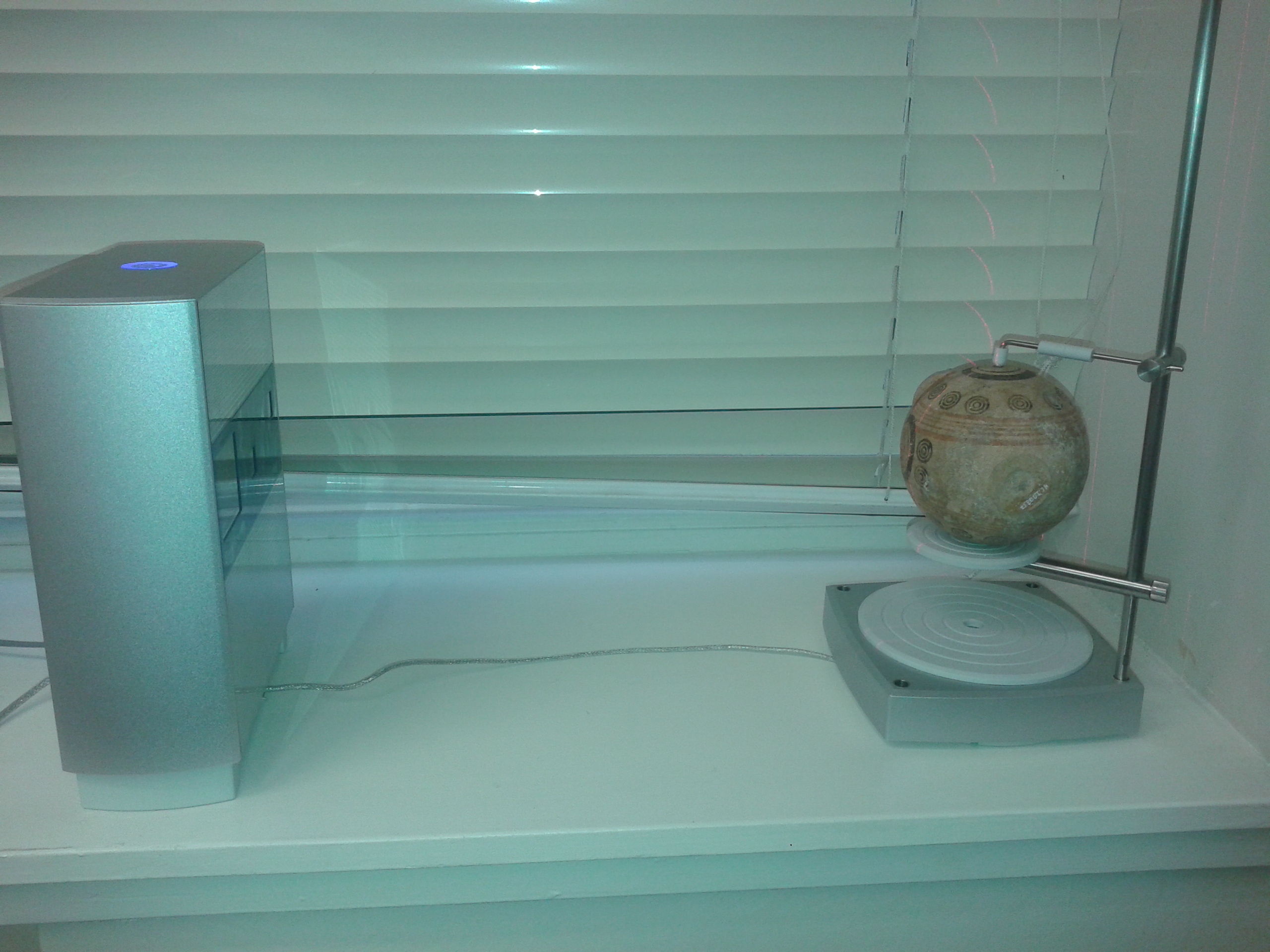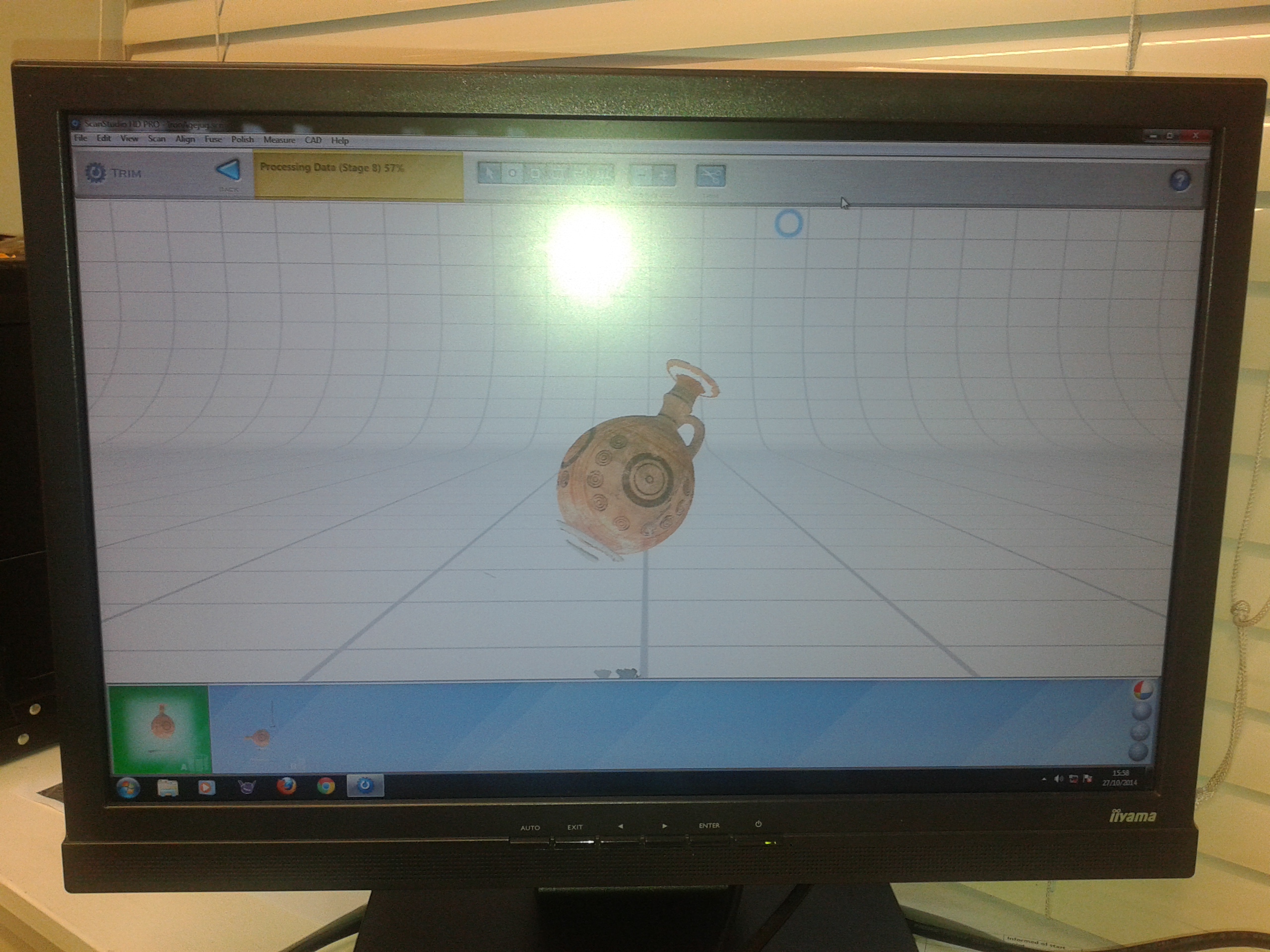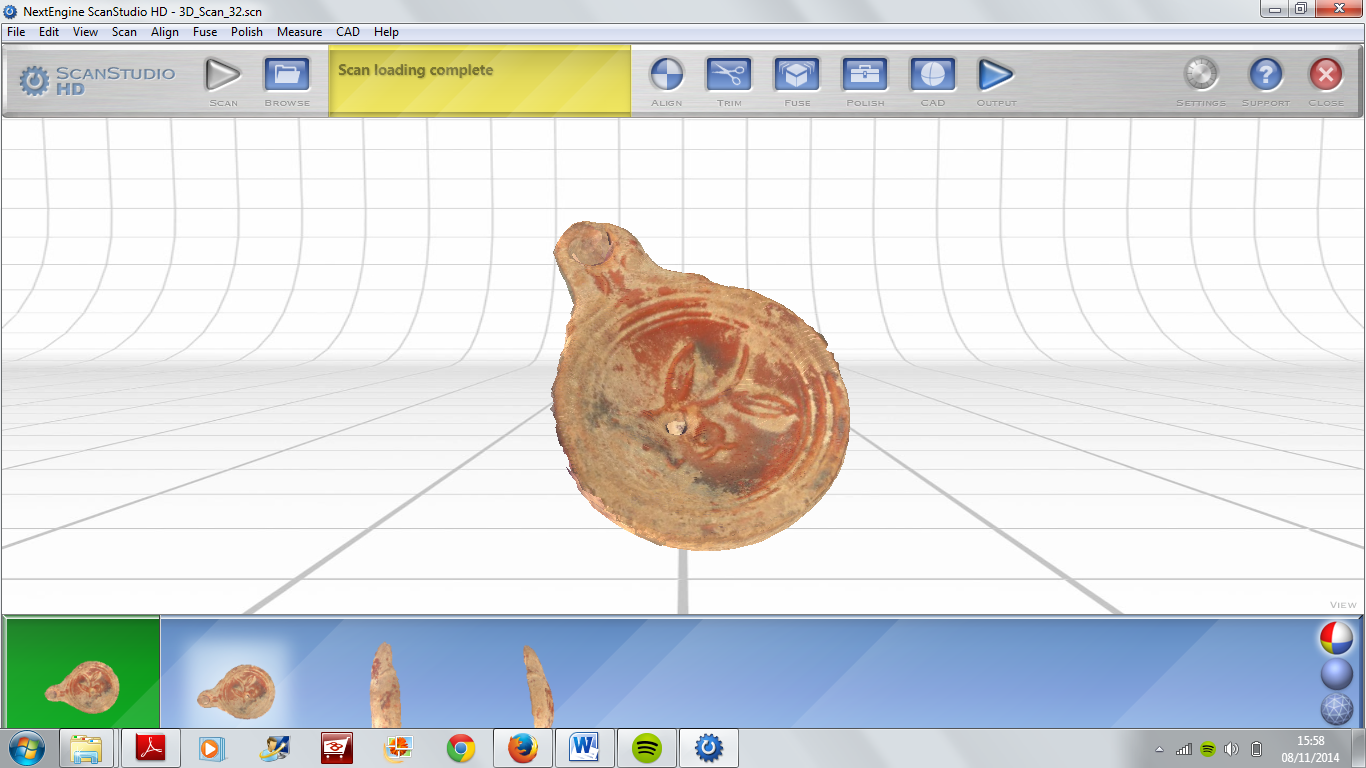This project has been undertaken as part of the requirements for the Mlitt. Museum and Gallery Studies at the University of St Andrews. The aims were to 3D scan 10 objects from The Bridges Collection, owned by University Museum Collections and to make the images available for viewing via the School of Classics website.
Why 3D?
Increasingly, museums and heritage bodies are collaborating with professionals in other disciplines in order to facilitate better and more comprehensive access to collections which otherwise would not be seen – or seen as often. Computer Science technology including gaming technology and 3D imaging is becoming very popular as a means of exploring archaeological and historical sites in a virtual way. At the University of St Andrews, extensive work has been underway for some time to explore these possibilities by collaboration with staff from a diversity of academic backgrounds and research interests.
3D imaging and the creation of models for viewing artefacts in their entirity potentially offers a “curator’s view” of the object which may not be possible to the wider public. This might be due to the fragile nature of an artefact or because of its value or lack of opportunities for exhibition. Virtual viewing can therefore reduce the amount of handling necessary through which damage may be caused. A virtual view of an object is not a replacement but another way of enhancing and increasing access to museum collections in terms of education and also enjoyment.

From January – August 2014, in collaboration with research staff from the Open Virtual Worlds team in the School of Computing Science, University of St Andrews, a variety of artefacts from this collection were scanned using a NextEngine™ 3D scanner. These scans were then loaded into WebGL for viewing online.

The artefacts used were selected primarily with the aim of creating a 3D exhibition which represents the broad chronology of the collection. The secondary consideration was then to assess their suitability for scanning. Some objects were more easily scanned than others due to factors such as shape, size, colour and decoration. Despite some difficulties with these criteria it has however, been possible to create a representation of a broad section of the collection due to the number of artefacts held within it.
The Scanning Process
It took around 40-60 minutes to collect all the data for each single scan and then each section of the scan had to be aligned together to create the full 3D modelled image. In some cases only two angles were required to achieve this, but with more complex shaped objects – such as the Sgraffiato bowl, multiple scans were needed to complete the 3D image.
The image below shows the carved stone figure of a male in progress. The detail required to complete the 3D image was considerably greater and therefore was more time consuming than some other objects due to the multiple contours which make up the image.

The image below shows the completed and aligned scan of a Roman lamp. This required 2 scans and was reasonably straightforward.

One of the main learning outcomes of this project has been that scans which required more angles and images to complete the full 3D image may take longer to load on the screen to view. More simple scans load more quickly by virtue of the fact that there is less data to load.